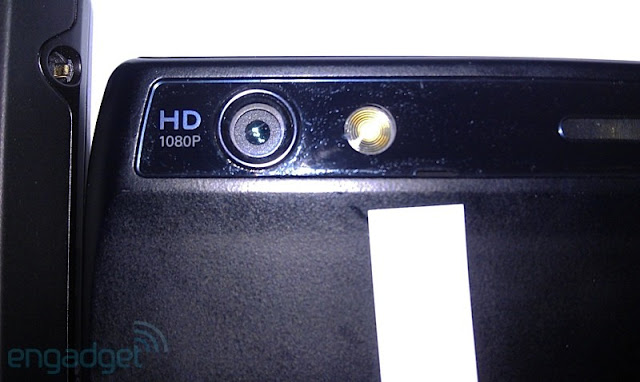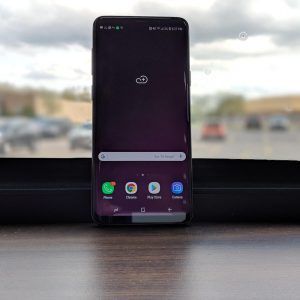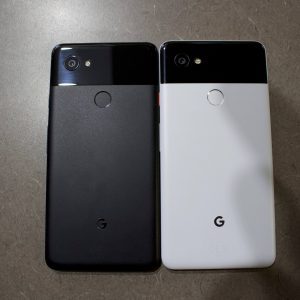Samsung Galaxy S III Review
5 min read
By Rob Boggan
Samsung has set the wireless world on it’s ear the past few years. Not only have they along with Apple been the driving force behind mobile sales, but they have taken Apple to task with an all out slug fest for the number one spot. They have transformed their Galaxy series of smartphones from “a” flagship device, to “the” flagship, and in turn made Samsung one of the true leaders in smartphone sales. Year after year, we are graced with a new Galaxy S flagship device with each one becoming more and more advanced than it’s predecessor. The Galaxy S III brings a host of new features and design improvements, as well as being the first US version of the Galaxy S to maintain the same looks as it’s European predecessor. Does it maintain the same performance? Read on for my review of the Samsung Galaxy S III.
Samsung did a wonderful job with the design of the Galaxy S III, with everything on the device just seeming to mesh really well. The device has a really thin, sleek feel to it and the colors used for the design are pretty solid. The Pebble Blue model has a sleek metallic finish to it, which is really easy on the eyes, but horrible when it comes to smudges and fingerprints. One thing that I am a huge fan of is the LED notification light on a smartphone and I’m glad Samsung is bringing it back with the Galaxy S III.
Being the first US Samsung device to natively rock Android 4.0, I already had super high expectations for the Galaxy S III. Thankfully, not only did Samsung deliver, but they seem to have knocked it out the park. The Touchwiz interface move along very smoothly on top of Ice Cream Sandwich, thanks largely in part to the dual core 1.5 Ghz Snapdragon S4 processor underneath this puppy. In addition, the Galaxy S III rocks a whopping 2GB of RAM which adds jet fuel to an already blazing fast device. T-Mobile, AT&T, Sprint, and Verizon all advertise 4G connectivity, but from my field tests, the Verizon model came out on top as far as overall speed, and reliability with the connection. T-Mobile’s connection was in and out, and AT&T and Sprint’s models felt like they were stuck in the 3G era still (Only because they are…. but shhhhhh.).
Samsung put a ton of their proprietary apps into the Galaxy S III, and normally I’m not a fan of Bloatware, but these app/features are pretty awesome. Loaded with S Beam, S Memo, and Samsung’s new voice to text service S Voice, Samsung made sure that their product stood above the rest of the competition. S Beam essentially works just like Android Beam in which it allows users to share photos, documents, and web links simply by placing two compatible devices back to back. S Memo is a feature ported over from the Galaxy Note that allows users to type or hand write personal memos for future reference. Surprise feature here is that the S Pen Stylus does actually work with this phone, so those looking for increased accuracy while using S Memo, but don’t want the size of the Galaxy Note, this is your huckleberry. S Voice has been the feature that the industry has been waiting for, as it provides what has been talked up as a legitimate competitor to Apple’s Siri virtual assistant. I’ll go ahead and break the news now by saying S Voice in no way comes close to the versatility of Siri. Nowhere. That’s not to say that S Voice doesn’t work, because it does and it works pretty well considering. There are still major improvements that need to be made as far as actual voice recognition and response, but S Voice is off to a good start.
Looking at the hardware on the Galaxy S III, it becomes blatantly obvious that Samsung wants users to be extremely pleased with the product. As previously mentioned, 2GB of RAM coupled with the 1.5 GHz dual core snapdragon S4 processor makes the Galaxy S III run like a dream. Battery life could be a bit better, but is far from terrible by comparison. With (Verizon) 4G on, heavy Tweets and Facebook, Google+, Email and YouTube, I was usually able to squeeze 7-8 hours out on a single charge. Rocking a dual camera system, the Galaxy S III also sports pretty impressive camera specs that will impress even the most advanced camera users. My personal favorite feature on the camera is called Share Shot. What Share Shot allows you to do is connect wirelessly to other Wi-Fi Direct capable smartphones, and from there photos that you take are instantly uploaded to the other connected device without any hassle. Fast and effective. Video recording also worked phenomenally, as we took several videos in HD, without any hints of lag or choppiness.
The Galaxy S III is THE phone to have this summer. There’s a ton of alternatives out there but I firmly believe this is the best that Android has to offer. With it being available on every carrier, it makes it that much easier for you to get your hands on, although just from performance sake, we preferred the Verizon model (Sorry everybody else.). It doesn’t hurt that Samsung has a pretty solid partnership with Google, so rest assured when the time is right, this bad devil will be among the first to snag the Jellybean update when it’s available. If you’re in the market for a high end Android phone, and don’t mind dropping $199, then look no further than the Galaxy S III for the best experience.
What do you think? If you own a Galaxy S III or are looking to snag one, chime in with your thoughts in the comments below!











